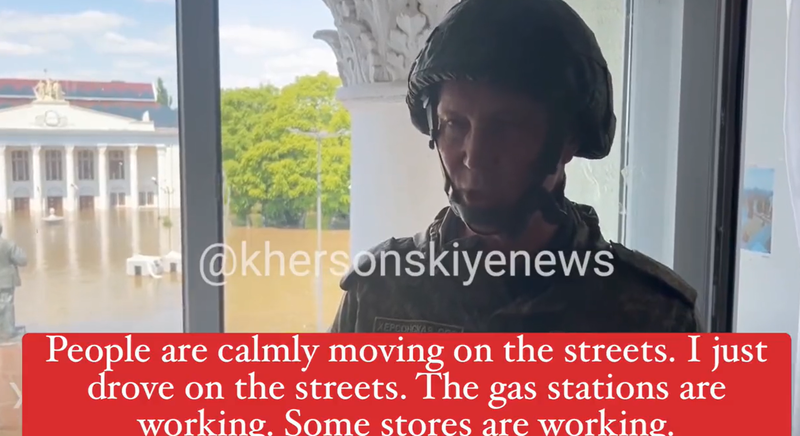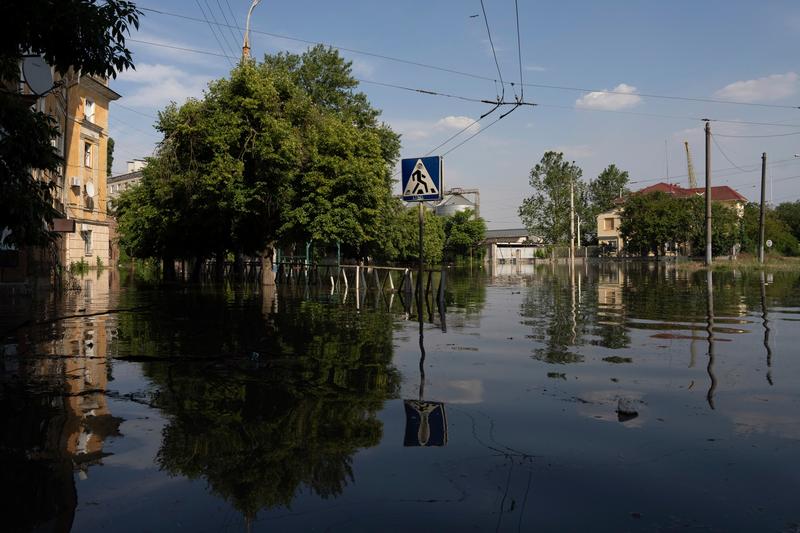
The collapse of the Novaya Kakhovka dam in southern Ukraine is one of the biggest industrial and environmental disasters in Europe in recent decades. The water destroyed entire villages, flooded farmland, deprived tens of thousands of people of electricity and clean water, and caused enormous damage to the environment.
CNN presents the three main theories about what caused the dam to collapse, and what experts and officials are saying about each:
Was it blown up by Russia to slow down the counteroffensive?
The President of Ukraine, Volodymyr Zelenskyi, his government, and military countries rushed to blame Moscow for the disaster. They said Russian forces had blown up the dam from the inside, with Zelensky citing a Ukrainian intelligence report from last year that claimed occupation forces had blown up the dam.
The Ukrainians note that during the last year the object was under the control of Russia, which contributed to the placement of explosives by Russian troops. Reports on social media suggest that people in the area heard explosions around the time the dam was likely damaged.
NORSAR, Norway’s nuclear test ban monitoring body, said seismic signals indicated an explosion at the Nova Kakhovka dam at 02:54 a.m. on June 6, making it highly likely that kinetic action was used to collapse the dam, War Translated reports. .
The approximate magnitude is from 1 to 2.
Norway’s nuclear test ban watchdog NORSAR says seismic signals indicate an explosion at the Nova Kakhovka dam at 02:54 a.m. on June 6, meaning a kinetic action was likely used to destroy the dam.
Magnitude is rated 1 to 2. https://t.co/CpSSWIaqRC pic.twitter.com/QYEPL8LWEF
— Faytuks News Δ (@Faytuks) June 8, 2023
Between “help Russian troops” and “doesn’t matter”
In addition, the breach of the dam coincided with the preparation of Ukrainian forces for the widely expected summer counteroffensive.
Volodymyr Saldo, the Russian-appointed governor of occupied Kherson, said the floods “worked in a way that operationally and tactically benefited the Russian forces,” Sky News reported.

Volodymyr Saldo (video recording)
Blaming Ukraine for the disaster, he said: “Our armed forces now have an open space in front of them through which they can see who is trying to cross the Dnieper and how they are going to do it. It will be impossible for them [forțele ucrainene] pass through the Kakhov reservoir, if they try.”
Michael Kofman, director of the Russian studies program at the American think tank CNA, expressed doubts that the destruction of the dam would have a “significant impact on Ukraine’s military operations”, reports The Guardian.
“The Kakhovka Dam is at least 100 miles away from where most of the offensive at the closest point could take place,” he tweeted.
Instead, General Mark Gertling, the former commander of US forces in Europe, offered a heated response on Tuesday after the Novaya Kakhovka dam was blown up, saying it would have serious consequences for the Ukrainian offensive.
Was it a missile strike from Ukraine?
Russia denies any involvement in the disaster and, in turn, accuses Ukraine of destroying the dam without providing evidence.
Russian President Vladimir Putin on Wednesday reacted for the first time to the destruction of the Novaya Kakhovka dam, calling it an “ecological and humanitarian disaster” and accusing Kyiv of a “barbaric act”, writes Reuters.
Moscow told the International Court of Justice (ICJ) on Thursday that Kyiv destroyed the Kakhovskaya Dam with “massive” artillery strikes, also accusing the Kyiv regime of “neo-Nazis”.
“Ukraine stated that Russia blew up a large dam in Nova Kakhovka. Actually, it was done by Ukraine,” said the Russian ambassador to the Netherlands, Oleksandr Shulgin.
“The Kyiv regime not only carried out massive artillery strikes on the dam (…), but also deliberately raised the water level of the Kakhov reservoir to a critical level by opening the valves of the hydroelectric plant,” he accused.
Shulgin did not present any evidence in court to support his responses to statements made by Ukraine to the International Court of Justice on Tuesday in a case it brought to the court in 2017.
Kremlin spokesman Dmytro Peskov said that the attack was “planned and carried out on orders from Kyiv” in order to “deprive Crimea of water” and divert attention from the hostilities.
Ukraine rejected the accusations and called Moscow a “terrorist state”

Flooding in the city of Kherson after the destruction of the Nova Hakivka dam Photo: Yevhenii Maloletka / AP / Profimedia
Was the dam old/unmaintained and failed?
The Nova Kakhov Dam—the largest reservoir in Ukraine by volume—is also the furthest downstream of the six Soviet dams on the Dnipro River.
The fact that the facility has been operating for several decades has led to speculation about a possible technical failure.
“This is a very common type of dam around the world. They’ve been in the making for hundreds of years, and if they’re designed and built well and properly maintained, the chance of failure is very, very low. It would be very unusual for this type of dam to fail without warning,” said Craig Goff, technical director and head of the dams and reservoirs group at HR Wallingford, an environmental hydraulics and civil engineering consultancy.
However, it is unclear how well the dam was maintained during the Russian occupation. The neighborhood has been one of the most affected regions since Russia launched its full-scale invasion of Ukraine in February 2022, and the dam has already suffered some damage. (complete on CNN)
Source: Hot News
James Springer is a renowned author and opinion writer, known for his bold and thought-provoking articles on a wide range of topics. He currently works as a writer at 247 news reel, where he uses his unique voice and sharp wit to offer fresh perspectives on current events. His articles are widely read and shared and has earned him a reputation as a talented and insightful writer.